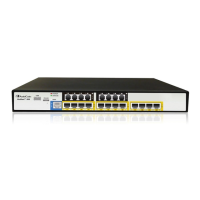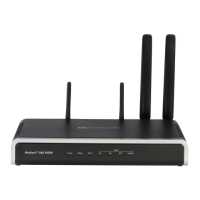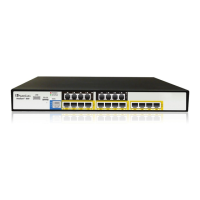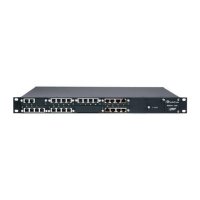Configuration Note 3. VLANs
Version 6.8 11 Mediant MSBR
3 VLANs
A VLAN is a broadcast domain that is created by switches. Typically, it is the router that
connects between the switches that broadcast to the VLAN domain.
The VLAN represents a group of hosts with a common set of requirements, independent of
a physical location. VLANs have the same attributes as a physical LAN, but allow you to
group end stations even if they are not located physically on the same LAN segment.
VLANs are usually associated with IP sub-networks. For example, all the end stations in a
particular IP subnet belong to the same VLAN. Traffic between VLANs must be routed.
LAN port VLAN membership is assigned manually on a port-by-port basis.
While configuring switch ports in a VLAN other than 1 (the default VLAN), all ports in a
single VLAN reside in the same broadcast domain.
VLANs are broadcast domains defined within switches to allow control of broadcast,
multicast, unicast, and unknown unicast within a Layer 2 device.
3.1 Commands
The table below describes how to assign an interface to a specific VLAN.
Table 3-1: VLAN Commands
Command Description
<physical_interface>
[slot/port.vlanID]
Allows you to enter a specific interface
configuration mode.
• <physical_interface> - selects the type of
interface.
• [slot/port.vlanID] – slot and port number is
taken from the device panel.
Note: The interface configuration mode
changes after the command is entered.
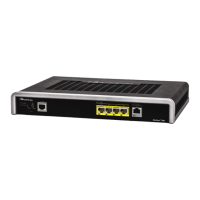
